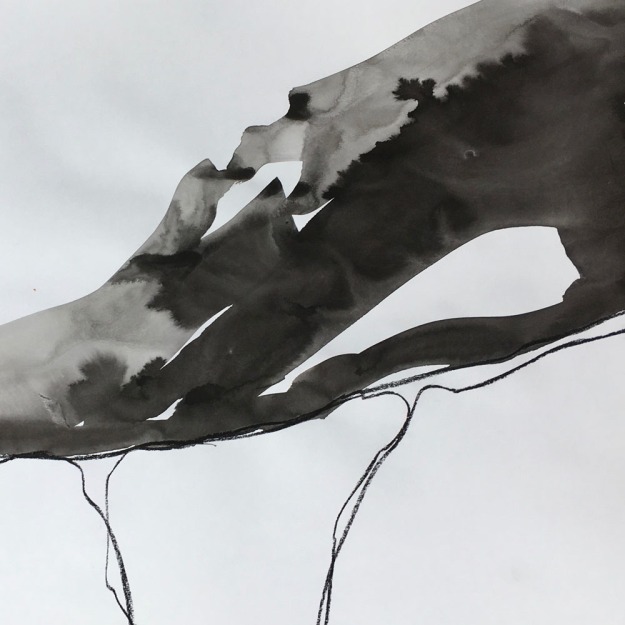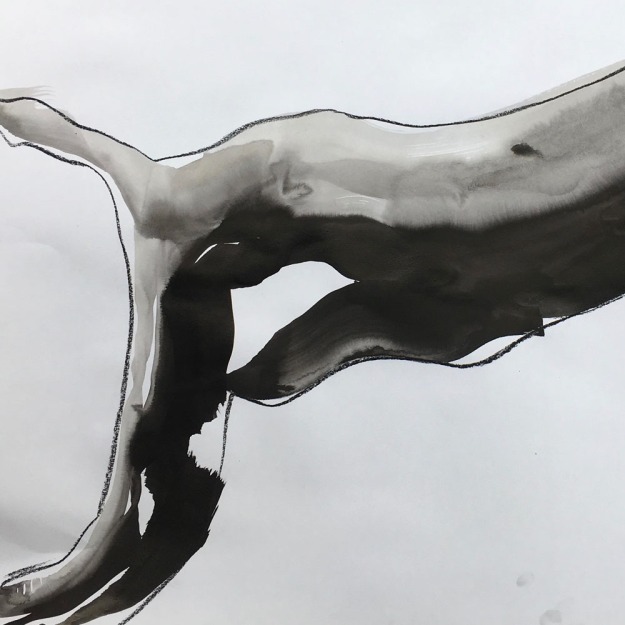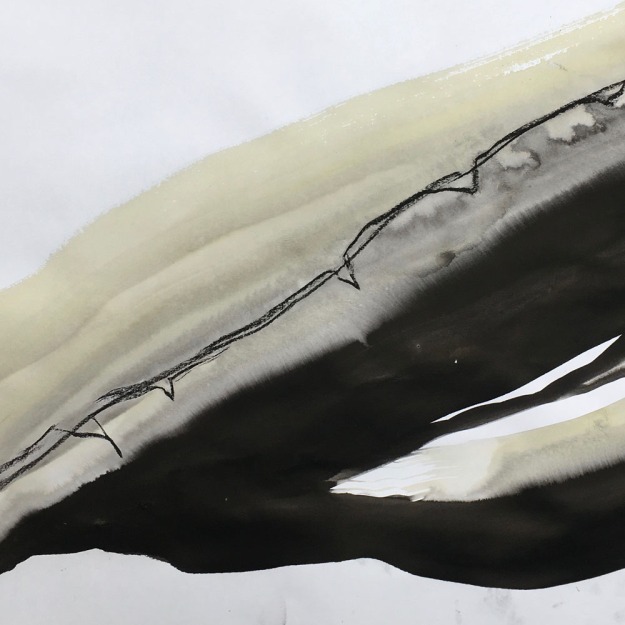
About 6 months ago a friend popped an article through my letterbox and it has been percolating around in my mind ever since. From an issue of Horizons, the University of Cambridge’s research magazine, the piece focuses on the East of England and considers climate change and flooding. It questions whether manmade barriers are the best coastal defence and with predicted rises in sea level of up to 1.5m by 2100, in the future these hard defences would only have to be built bigger and higher and become more conspicuous.

The East coast is a low lying ‘soft’ coast. The energy of tides and waves brings silt and clay that accumulates near the shore. As the water shallows, the particles are trapped by salt tolerant plants and salt marsh begins to form. Salt marshes are a valuable environmental resource as they can absorb and bury carbon from the atmosphere and offer habitats to unique plants and animals

Although salt marsh changes daily with each tide, and is particularly vulnerable to coastal erosion, tidal surges and flooding, the article, written by Sarah Collins, suggests that it could actually provide a more sustainable option to hard, concrete defences and act as a protective barrier, buffering wave actions, reducing their height and therefore their potential for damage. It has been shown that a narrow strip of salt marsh 40m wide reduces wave height by 20% and strip 80m wide can reduce waves to zero – the saltmarsh is able quite literally to swallow the waves.

Here in Wells, low-lying reclaimed farmland is protected by man-made sea defences – high sea walls that were built to protect the land in the aftermath of the flooding of the 1953 tidal surge. These walls do protect the land, but they also create a barrier, stopping the shore from moving inland and squeezing the saltmarsh between the sea and our coastal defences.

To act efficiently as natural flood defences the sea and salt marsh needs to be able to move landwise naturally and freely and with the projected rise in sea levels it is unlikely that the coastline will stay as it is at the moment.

The issue of the changing coastline has occupied my mind for some time now and I have been considering how I could make a piece of work that considers these issues. The drawings here are some of my first ideas and explore ideas around the destructive tide, inundation and shifting boundaries. Next time I’ll show you my next steps in this project.

Absolutely fascinating, Debbie, and an idea it would be great to see implemented. You should forward the article to Chris Packham, though he probably knows!!!
Gosh Susan – I don’t think I would dare!!
I think he’d be absolutely delighted that you care so much. Just do it, what have you got to lose?! 😊
Can’t wait to see what you do with this.
Really love these initial responses to the ideas of environmental.changes to the East coast. Look forward to how you develop these lovely Mark’s- but find them evocative and beautiful as they stand.
Thank you Isobel!
There was an interesting piece on Countryfile about this and a farmer who is letting some of his land flood. I can’t remember exactly where he was, the piece was a few weeks ago I think.
Thanks for the reference Debbie, I looked it up ….. interesting!
And a very interesting piece on Springwatch about how introduced beavers have improved the ecology of the surrounding land with the building of their dams.
Thank you for a very informative article on salt marshes as a stay against the scary reality of rising sea levels and for sharing your evocative drawings. Can’t wait to see the final work
Thanks Mariss!
The changing shape of coastlines is geomorphological constant, with erosion and deposition working hand in hand to gradually change the coastlines of the world. This eternal process doesn’t necessarily make it a climate change or a rising seal levels issue – per se. Land rises and falls too, for various reasons – isostasy, landmass subduction and more. The day to day result though, is what you see and notice happening, and I would love to live in the landscape you draw so much inspiration from, Debbie.
Hi Alison, thank you for your (more) scientific description of the ongoing processes change. I, of course, work with a romanticised version of what happens, but feel strongly that I should understand the science behind my thinking. Luckily I have a daughter who is a geographer specialising in coastal processes, geomorphology and coastal flood risk – so you could say it’s in the family! She does quantitive research and mine is more qualitative.
Hi Debbie
A lovely post and fascinating to see your work, inspiration and sources – I’ll check out the Horizons link. My research, for the project I’m doing with Helen Terry, has led me In the same direction of how we value/ don’t value salt marshes. Involving dowloading documents on policies of coastal flood management. Ive also come to the conclusion that we need to replace or back up hard structures with more landscapes that could act as flood ‘sinks’
☺ X
Sally Tyrie
http://www.sallytyrie.com
From: debbie lyddon Reply to: debbie lyddon Date: Thursday, 4 June 2020 at 13:26 To: Subject: [New post] The protective coast
debbielyddon posted: ” About 6 months ago a friend popped an article through my letterbox and it has been percolating around in my mind ever since. From an issue of Horizons, the University of Cambridge’s research magazine, the piece focuses on the East of England and conside”
Hi Sally, great to hear from you and interesting to hear you are working along the same lines. In the long term I believe we will have to let the sea take its own course and do what is natural for it, which is to flow and sometimes to inundate (maybe not what coastal residents would want?) Of course it’s fine to do research and to have ideas ….. but how to translate that into meaningful art? I look forward to seeing what you and Helen are doing when we finally get back to normal.
The intense energy of your drawings completely changes the experience of reading the narrative – that in itself is a lesson. As for the role of salt marshes, spending time on a southern US barrier island that has sand on one side (towards the ocean of course) and marsh on the other, taught me that lesson. I look forward to your next post.
I’m glad the images enhanced your reading of the text. Of course I’m not trying to illustrate what I say, but the drawings are able to ‘describe’ the process in a way that words never could.